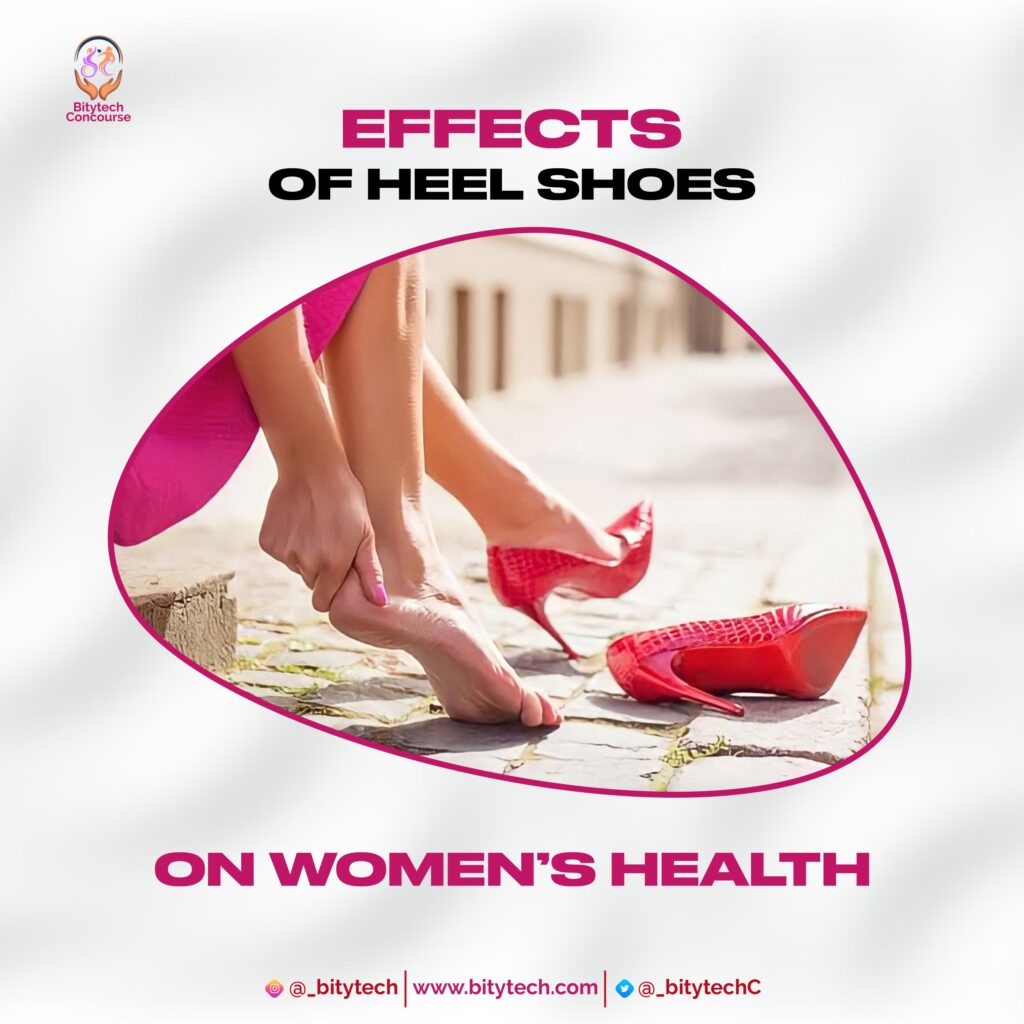After my secondary school, while I was waiting to write JAMB, I applied for some jobs, went for interviews. Finally, i settled for ushering because it’ll give me time to study for my exam and also help my mum at home.
The job was stressful, It required I be on cooperate heels (stilettos) for long hours. I always get sore feet at the end of the day and sometimes, I get bruises on my toes. I had to get a more comfortable heel for my job.
I continued the job even after I gained admission into the university. Consequently, I noticed some pains on my heels and calf when I walk, it was a mild pain which later goes away, I also get this sharp pain on my ankle or knee when I try to walk but I always feel better after some minutes.
After a few years, I was getting ready to run some errands for my mom, I stood from the chair and felt this sharp pain on my left hip. I sat back for some minutes, stood again and made to walk but this time, the pain was worse. I waited for another minute but the pain grew worse. It was an excruciating kind of pain this time and I couldn’t bear weight on my left limb. I unzipped my pants to check the spot the pain was coming from but I couldn’t pin point a spot. It felt like it was towards my left buttocks (where I had abscess in the past). Again I tried to walk but couldn’t and I figured the pain was coming from the hip area. I had to hop to my mum’s room to tell her how I was feeling.
She asked if I fell, which my answer was no and she set to massage/stroke my entire limb. I was able to stand on both legs but still couldn’t walk and we couldn’t cancel the plan for the day so she gave me diclofenac insert and continued with the massage till I was able to walk. This was after 30 minutes. The pain didn’t stop entirely but I was able to walk without limping. This pain continued for the next few days but it stopped eventually. I decided to take a break from the job.
Wearing heel shoes for long hours and over a long period of time have a negative impact on various body parts. Heels changes a person’s gait and puts stress and pressure on the body especially the spine which may eventually affect the ankle, calf muscles, knees and lower back. The Achilles tendon also faces intense pressure which may shorten the tendon.
Health conditions that may arise from constant wearing of heels;
Arthritis
Ankle sprain
Altered posture
Bunions
Corns and Calluses
Damage to the leg and foot muscles
Hammer toes
Knee pain
Plantar fasciitis
ARTHRITIS: This is the swelling and tenderness of one or more joints. It is accompanied by joint stiffness, pain and decreased range of motion.
ANKLE SPRIAN: One can fall or slip on heels resulting to a sprained ankle while walking on uneven surfaces. A heavier fall may result to bruises and fractures
ALTERED POSTURE: High heel shoes stresses the foot and calf muscles, makes the knee’s come forward arches the lower back more than usual which causes pain on these regions.
BUNIONS: This is sometimes inherent or a foot type present at birth but the use of high heel shoes forces the toes together and puts pressure on the
The bunion may look red, swollen or have a darker color than the surrounding skin.
CORNS AND CALLUSES: These are thick, hardened layers of skin that develop on one’s feet when one wears poorly fitted shoes. It can also develop on the toes, fingers and hands. Also, constant rubbing, friction and pressure on a particular area of the skin can make one to develop this condition. Corns and calluses are not painful when they first develop but may become painful as they thicken.
HAMMER TOE: This can also be called mallet toe results from imbalance in the muscles, tendons or ligaments that normally keeps the toes straight. The use of ill- fitted shoes can also lead to this condition. Here, the toe has an abnormal bend in the middle joint. The affected toe maybe painful and may develop corns and calluses. People with this kind of condition are advised to wear comfortable shoes with open-toes.
PLANTAR FASCIITIS: This is the most common causes of heel pain. The plantar fascia is a thick band of tissue at the bottom of the feet which connects the toes to the heel bone and creates the arch in the foot.
This foot condition is common amongst people with flat feet, high medial arch, overweight and pregnant women, people who wear shoes with uncomfortable heels, ETC.
People with these foot conditions should consult an orthotist to provide devices that may relieve their pain, support and correct these foot consitions.
POSSIBLE SOLUTIONS
Ensure your shoes are the correct size for you.
Your shoe racks should consist of really comfortable shoes that provide more support and cushion.
Avoid wearing really high heel shoes with pointy toes and minimize the number of days you wear heels.
Wear a thicker heel for better balance, weight distribution and less pressure.
Use protective coverings on shoes like socks, shoe pads, toe seperators.
Apply moisturizing creams to the corns or calluses areas.
Long toe nails can make the toes push against the shoe increasing friction and pressure on the foot.
